The maquis: an enduring symbol of Côte d’Ivoire
In Abidjan, meeting spots abound, whether it’s under an acacia tree, at the market or even on the road. But the ultimate meeting place is at one of the maquis (open-air restaurants), where Ivorians eat, drink and enjoy time with their friends. Above all, it is a place where the locals come to unwind after a busy day.
Like the chophouses of neighbouring Ghana, the maquis can be found anywhere in Côte d’Ivoire, and has become an enduring symbol of this West African country. It was originally conceived by the matriarchs of Ghanaian families in the 1950s and was later appropriated by Ivorian women of the Baoulé tribe. When the country went through a recession in the 1980s, the popularity of the maquis exploded, as a place where reasonable prices and conviviality converged. Today, it remains an indelible part of the social and cultural landscape.
Etymology
The word maquis literally means “scrub” or “bush”, perhaps a reference to its humble beginnings as a place of hospitality for farmers, visiting from surrounding regions. It is also referred to as a “cul par terre” (which roughly translates to “your butt on the floor”), because of its informal environment.
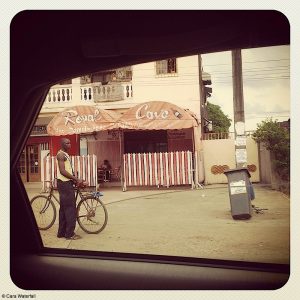
Perhaps more tellingly, the phrase “prendre le maquis” means “to go underground”. Indeed, the maquis — which started off as a private family business — often operated illegally, serving bush meat (game) and homemade gin. But over time, these eateries have become more sophisticated, even outdoing some of Abidjan’s finest restaurants.
There are many different kinds of maquis from the makeshift kiosk with its rotisserie spits to l’hyper where the thumping beats of DJs compete with the gyrations of Ivorian youth. But not all maquis are created equal: be sure to ask for recommendations to ensure your maquis meets the proper hygiene standards. (And it should be noted that — unless you have an iron stomach — it’s best to start with the more innocuous dishes like braised chicken with rice.)
Ultimately, the maquis is a democratic space where people can sit shoulder to shoulder at rickety, plastic tables, imbibing beer and discussing the day’s events. And it’s egalitarian – women own their fair share and enjoy the atmosphere just as much as men do.
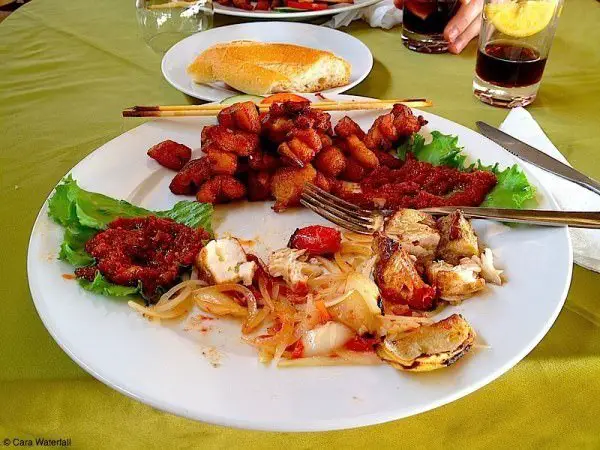
Chez Rokia
One of my favourite maquis is run by an Ivorian woman called Rokia who moved to the city from a smaller town in the west of the country in the hopes of making her fortune. She succeeded: her maquis is full of people enjoying the freshly-prepared meals or a cold beer.
In Abidjan, there are very few street signs and if they exist, sometimes the names don’t match; street names are updated to reflect a change in presidency or the death of a local luminary. Therefore, landmarks are the only way to know where you are going. Abidjan is a city where places — and streets — have no names. Rokia’s maquis is nameless, too. “The people who come here, they know who I am. They know they are chez Rokia,” she tells me.
Address: Chez Rokia, Angré, 22nd district, Abidjan.
Maquis etiquette and menu
In general, people eat the food at a maquis with their hands although cutlery is usually available. If do you do decide to eat like the locals, then remember that you must only eat with your right hand — the left hand is considered unclean.
Three places to enjoy the maquis scene in Abidjan
District: Cocody
L’Allocodrome
Welcome to the Allocodrome, renowned for its size, crowds and variety of Ivorian food. From 4pm until dawn, the place hums with the robust voices of the vendors and their hungry customers.
Address: Rue Washington between Avenue Jean Mermoz and Boulevard de France
District: Marcory
Mille maquis
When the renowned Rue Princesse was razed in August 2011, the street of 1000 maquis became the new hub for Côte d’Ivoire’s musical and dance culture.
Address: Marcory Potopoto, Abidjan
District: Treichville
Poulet avec les doigts
Although this maquis does not have a name on its sign, it’s universally called “chicken with the fingers”. It’s famous for (surprise) its melt-in-your-mouth chicken and aloco.
Address: Just to the left of cabane Bambou on Avenue 26
Dishes are made to order, which can mean a long wait. The servers typically bring you a bowl as well as sachets of detergent or a bottle of dish soap to wash your hands in.
A few of the main dishes
Poulet braisé (braised chicken): The chicken is marinated in Dijon mustard and liberal lashings of garlic before being grilled. It is usually served on a bed of raw onions, tomatoes, and green peppers.
Poisson braise (braised fish): Tilapia, catfish, or carp is seasoned and coated in a blend of spices, then grilled on a charcoal grill. It is then sprinkled with a mix of sliced tomatoes, onions, and grilled chilli peppers.
Kedjenou (a ragout with chunks of meat): The meat could be wild game, chicken, or goat and it also includes chopped onions, tomatoes, and fresh ginger. Be specific about what type of meat you want or you might end up with agouti (a rodent known as the Grass Cutter or Greater Cane Rat). It’s an Ivorian delicacy.
Escargots: These giant forest snails bear very little resemblance to their smaller counterparts in the Western world although they have a similar consistency. They are not for the faint of heart (or stomach).
Peanut soup: The base of this traditional, hearty soup is (obviously) peanuts, as well as beef, chicken, goat or smoked turkey; sometimes, tomatoes, okra or onions are tossed into the mix.
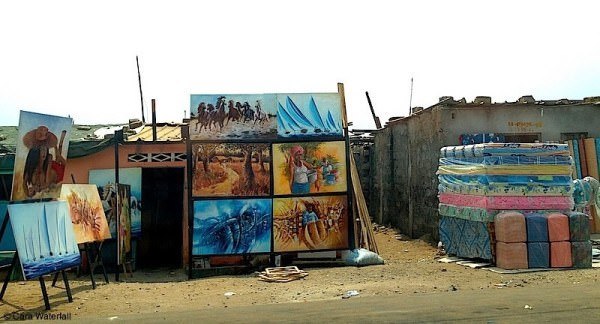
Sides:
Aloco: fried plantains that are typically served with regular or spicy tomato sauce.
Attieke: the couscous of Cote d’Ivoire, this dish is made from crumbled, fermented manioc (also known as cassava).
Foufou: Ripe plantains or yams are lightly pounded and then mixed with warm palm oil; it is then dusted with a spicy powder and served with a light African eggplant and tomato soup.
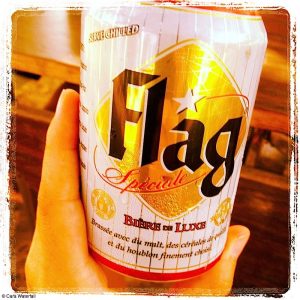
Foutou: Plantains (or yams) are mixed with manioc flour, the resulting mixture is made into a dense ball and it’s eaten with sauce.
Sauces
Sauce tomate: a tomato sauce that closely resembles a marinara sauce; accompanies meat and side dishes.
Sauce pimenté: a much spicier version of the sauce tomate.
Sauce claire: The primary ingredient of this “clear sauce” is eggplant.
Sauce graine: This sauce gets its colour from its primary ingredient, red palm oil.
Getting to and around Abidjan
Félix Houphouët-Boigny International Airport (also known as Port Bouet) is 16 kilometres southeast of Abidjan. It is served by major airlines like Air France and Emirates, though Royal Air Maroc can offer more affordable flight options. It is less than an hour’s flight from all of the capitals of the sub-Saharan region.
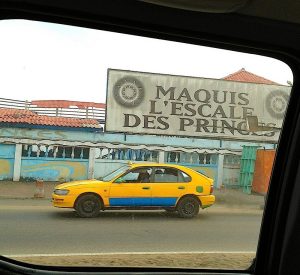
To get around, go by taxi — they are so affordable that it makes sense to forego the relative discomfort of public buses and shared taxis, and a taxi will take you anywhere you need to go. Always negotiate the fare before hopping in the taxi; the drivers don’t often remember to set the meters, which are typically in shabby shape. A fare between districts should not run you more than 2000 to 2500 CFAs (US$4-6). And the first rule of taxi negotiations? Always bid low.
If you are planning to go out at night, always have company, and be aware that taxi fares are generally 500 to 1000 CFAs (US$1-3) higher.

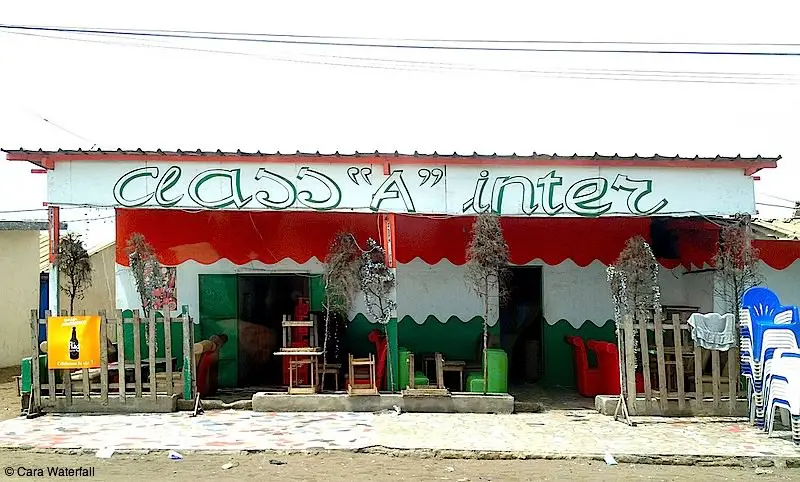

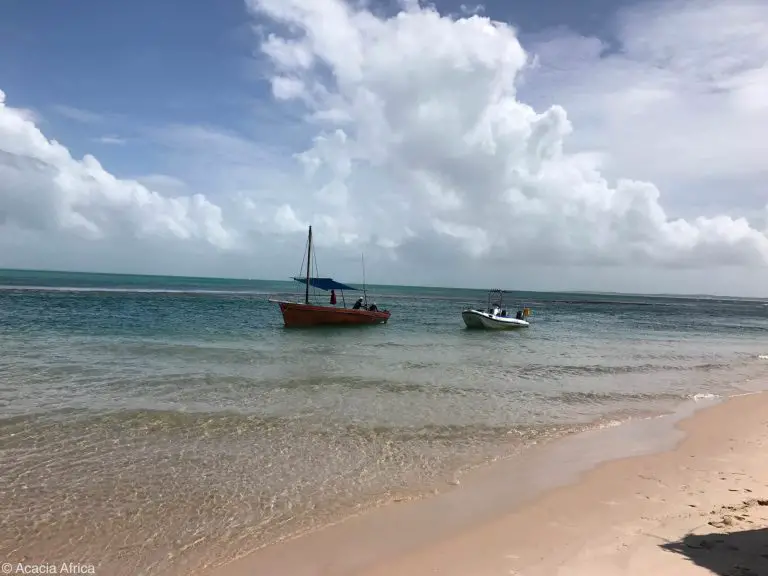
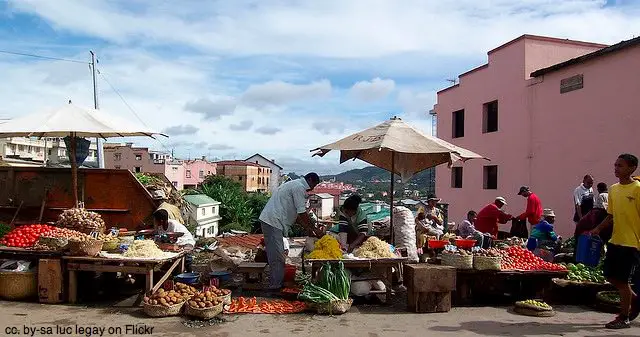



Wow, the Ivory Coast just moved up my to-visit list by several spaces! Looks delicious, Cara.
Thanks, Craig and Linda! Food is very good here not just at the maquis, but also at the bakeries…great Vietnamese restaurants here, too!
food and drinks sound great its look so delicious and mouth watering .
Just want to confirm that everything Cara has detailed is 100% right. I have lived in Cote d’Ivoire for almost 5 years and I am constantly finding new Maquis . The standards are usually very high and in all my time here I can honestly say that I haven’t had a bad meal. The people are very friendly and the atmosphere is great. My wife is currently planning to open a Maquis which will feature traditional Ivorian fare, a European menu for the more faint hearted, and also special delicacies from Guinea. Keep the Maquis on your places to visit whenever you come to Cote d’Ivoire.
Great article Cara! Thankyou………